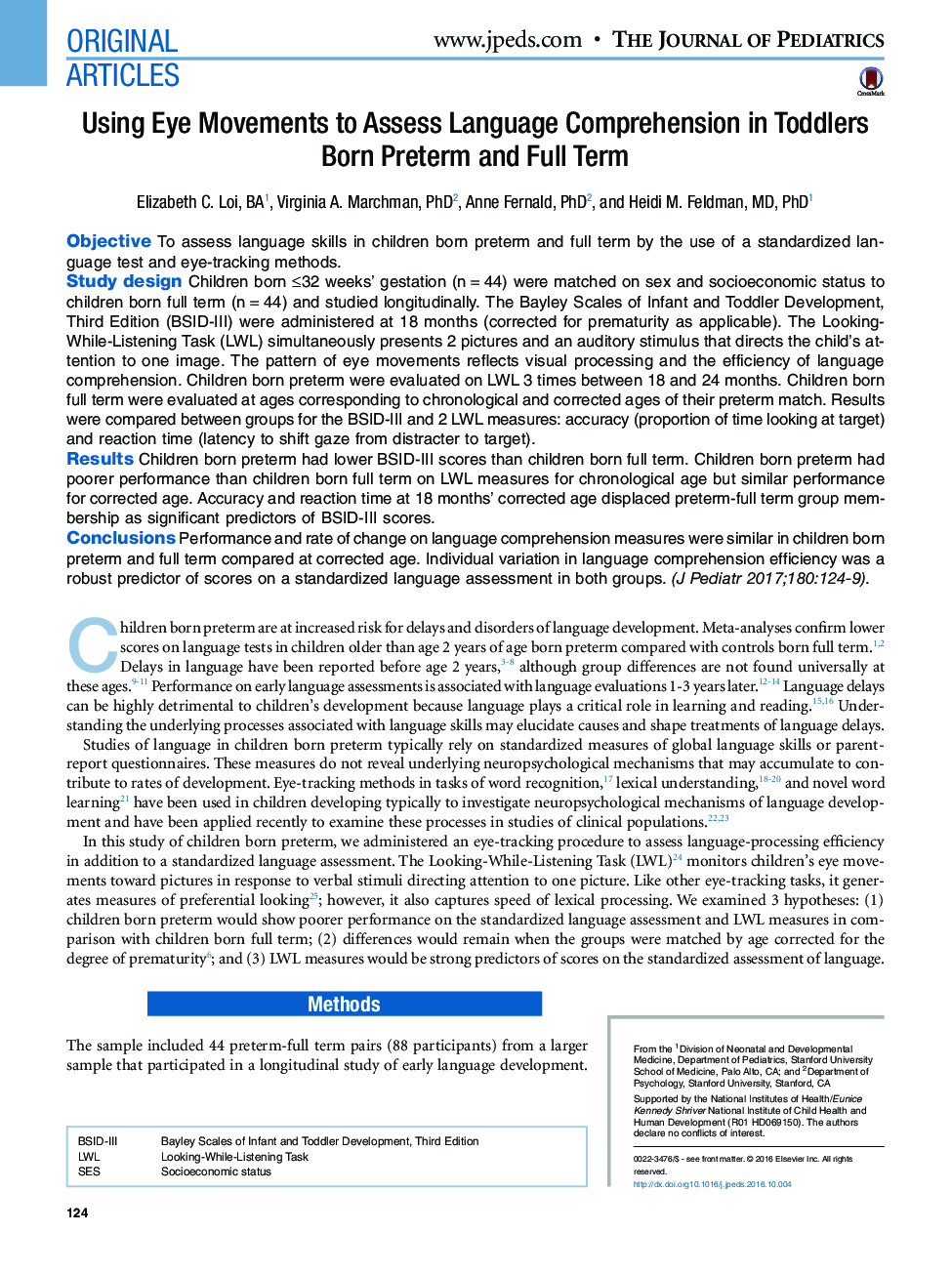| Article ID | Journal | Published Year | Pages | File Type |
|---|---|---|---|---|
| 5719297 | The Journal of Pediatrics | 2017 | 6 Pages |
ObjectiveTo assess language skills in children born preterm and full term by the use of a standardized language test and eye-tracking methods.Study designChildren born â¤32 weeks' gestation (nâ=â44) were matched on sex and socioeconomic status to children born full term (nâ=â44) and studied longitudinally. The Bayley Scales of Infant and Toddler Development, Third Edition (BSID-III) were administered at 18 months (corrected for prematurity as applicable). The Looking-While-Listening Task (LWL) simultaneously presents 2 pictures and an auditory stimulus that directs the child's attention to one image. The pattern of eye movements reflects visual processing and the efficiency of language comprehension. Children born preterm were evaluated on LWL 3 times between 18 and 24 months. Children born full term were evaluated at ages corresponding to chronological and corrected ages of their preterm match. Results were compared between groups for the BSID-III and 2 LWL measures: accuracy (proportion of time looking at target) and reaction time (latency to shift gaze from distracter to target).ResultsChildren born preterm had lower BSID-III scores than children born full term. Children born preterm had poorer performance than children born full term on LWL measures for chronological age but similar performance for corrected age. Accuracy and reaction time at 18 months' corrected age displaced preterm-full term group membership as significant predictors of BSID-III scores.ConclusionsPerformance and rate of change on language comprehension measures were similar in children born preterm and full term compared at corrected age. Individual variation in language comprehension efficiency was a robust predictor of scores on a standardized language assessment in both groups.
